TLDR Laser hair removal is the most requested cosmetic procedure and has become a scientifically-based treatment suitable for all skin types.
The 2011 article reviews laser hair removal (LHR), detailing the principles of selective photothermolysis for targeting hair follicles, and the importance of understanding hair anatomy and physiology for effective treatment. It acknowledges that while LHR was initially best for individuals with fair skin and dark hair, technological advancements have expanded its applicability to all skin types. The review covers alternative hair removal methods but notes their lack of permanence compared to LHR. It also lists available laser and light devices for hair removal at the time and underscores the necessity of proper patient selection, preoperative preparation, and laser safety for successful outcomes. The document further explains post-procedure care, including managing common side effects like perifollicular erythema and edema, and the need for multiple sessions, as only about 15% of hair is permanently removed per session. It highlights the risk of pigmentary changes and paradoxical hypertrichosis as complications, discusses pain control advancements, and mentions the limited evidence for home-use devices and alternative technologies like ELOS, which showed promise in a study of 40 patients. The conclusion emphasizes that LHR is the most requested cosmetic procedure globally, and the field has transitioned from an art to a science.
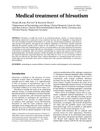 66 citations
,
September 2008 in “Dermatologic therapy”
66 citations
,
September 2008 in “Dermatologic therapy” The conclusion is that the best initial treatment for hirsutism is usually oral contraceptives, with the addition of antiandrogens or insulin sensitizers if needed, and topical eflornithine or laser treatments as supplementary options.
125 citations
,
February 2007 in “Journal of the American Academy of Dermatology” Combining eflornithine cream with laser treatment removes facial hair better than laser alone.
39 citations
,
January 2006 in “Journal of Cosmetic and Laser Therapy” Pneumatic Skin Flattening (PSF) significantly reduces pain during laser and IPL hair removal.
 271 citations
,
December 2005 in “New England journal of medicine/The New England journal of medicine”
271 citations
,
December 2005 in “New England journal of medicine/The New England journal of medicine” The document likely offers guidance on treating a woman's excessive hair growth, considering her symptoms and obesity.
82 citations
,
May 2005 in “Dermatologic therapy” Laser hair removal has advanced to effectively reduce hair for various skin types and hair colors.
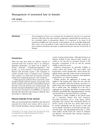 27 citations
,
December 2001 in “Clinical and experimental dermatology”
27 citations
,
December 2001 in “Clinical and experimental dermatology” Different hair removal methods have pros and cons, and more evidence is needed to prove laser treatments work.
90 citations
,
February 2000 in “Dermatologic Surgery” Alexandrite laser hair removal is safe for darker skin tones.
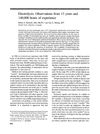 132 citations
,
October 1995 in “Journal of the American Academy of Dermatology”
132 citations
,
October 1995 in “Journal of the American Academy of Dermatology” Electrolysis is effective for permanent hair removal, but technique is key to avoid scarring, and sometimes hormonal treatment is needed for women with hirsutism.
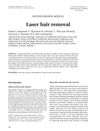 207 citations
,
January 2011 in “Dermatologic Therapy”
207 citations
,
January 2011 in “Dermatologic Therapy” Laser hair removal is the most requested cosmetic procedure and has become a scientifically-based treatment suitable for all skin types.
39 citations
,
January 2008 in “Journal of cosmetic and laser therapy” The document provides guidelines to standardize and improve laser hair removal practices.
 22 citations
,
June 2002 in “Seminars in cutaneous medicine and surgery”
22 citations
,
June 2002 in “Seminars in cutaneous medicine and surgery” Laser hair removal works well for people with dark hair and light skin, but it's less effective for light hair or dark skin; improvements are expected.
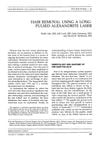 26 citations
,
April 1999 in “Dermatologic Clinics”
26 citations
,
April 1999 in “Dermatologic Clinics” The long-pulsed alexandrite laser is effective for hair reduction, particularly for light-skinned individuals with dark hair, but caution is needed for darker skin.







